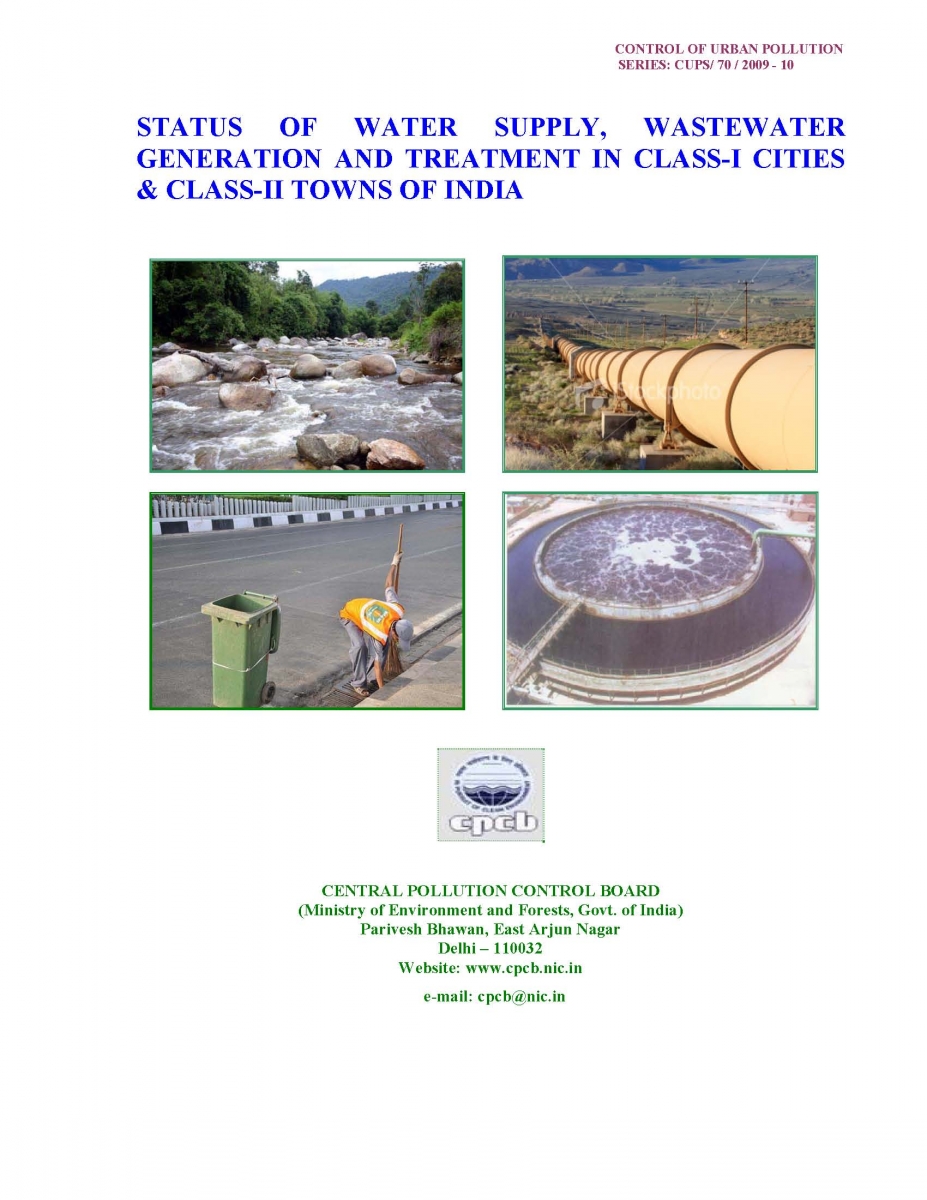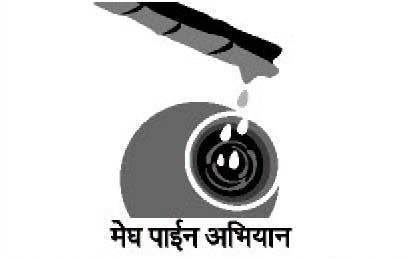/topics/contamination-pollution-and-quality
Contamination, Pollution and Quality
Status of water supply and wastewater generation and treatment in Class-I cities and Class-II towns of India - A report by CPCB (2009)
Posted on 23 Mar, 2010 03:34 AM This is the fourth in a decadal series of reports published by the Central Pollution Control Board (CPCB), previous ones published in 1978-79, 1989-90 and 2000, which provides basic information about the status of water supply and sewage generation and treatment of 498 Class-I cities and 410 Class-II towns, along with information on 53 coastal Class-I cities and 35 coastal Class-I towns, besides Ganga Basin as a separate subsection.
This is the fourth in a decadal series of reports published by the Central Pollution Control Board (CPCB), previous ones published in 1978-79, 1989-90 and 2000, which provides basic information about the status of water supply and sewage generation and treatment of 498 Class-I cities and 410 Class-II towns, along with information on 53 coastal Class-I cities and 35 coastal Class-I towns, besides Ganga Basin as a separate subsection.
Reverse osmosis plants for rural water treatment in Gujarat - A research paper by CAREWATER
Posted on 23 Mar, 2010 01:38 AMThis research paper attempts to understand and map the Reverse Osmosis (RO) phenomenon, a technology that is turning out to be an important solution for drinking water treatment in rural Gujarat. Treatment plants with capacity ranging from 10 litres per hour (lph) to 6000 lph are now supplying drinking water in several hundred villages of the state. Small sized plants with capacity < 20 lph are used by individual families whereas medium to large sized plants (>100 lph) are being used for public consumption.
Organising safe drinking water through community participation in flood-affected areas of Bihar - Case studies from the work of the Megh Pyne Abhiyan network
Posted on 22 Mar, 2010 02:08 AM This set of case studies (in hindi), details the work of Megh Pyne Abhiyan and their network partners - Gramyasheel and Samta, in organising safe drinking water in participation with the local village communities, in the flood affected West Champaran, Supaul and Khagaria districts of Bihar.
This set of case studies (in hindi), details the work of Megh Pyne Abhiyan and their network partners - Gramyasheel and Samta, in organising safe drinking water in participation with the local village communities, in the flood affected West Champaran, Supaul and Khagaria districts of Bihar.
National Workshop on Water Conservation and Quality Challenges: Towards Adaptive Strategies, TERI, New Delhi
Posted on 17 Mar, 2010 06:02 PMWORLD WATER DAY CELEBRATION
22 March 2010
National Workshop on
Water Conservation and Quality Challenges: Towards Adaptive Strategies
Organised by
The Energy and Resources Institute (TERI) in collaboration with, UNICEF and Hindustan Unilever Limited (HUL)
Hydrogeological studies for improved groundwater management strategies in the dryland areas underlain by Deccan basalts - ACWADAM
Posted on 02 Mar, 2010 05:18 PMPollution of River Ganga, its control and preservation
Posted on 01 Mar, 2010 03:54 PMI recall the day two months before, when I had the opportunity to attend a seminar at the outskirt of Delhi. The hot topics, to be bothered and discussed in the gathering was: “Pollution of River Ganga & its Control and Preservation” (i.e. Ganga ka Pradushan … Ganga Bachao”).
And so, so early reached at the venue ignoring the shivering cold weather. However, it happened so, probably due to the chilly cold situations, that VIPs- honourable guests and invited respected audience reached one by one…. at last to conclude it to be ‘a late affair’!
Central Board for the Prevention and Control of Water Pollution (Procedure for Transaction of Business) Rules - (1975)
Posted on 25 Feb, 2010 04:24 PMThe following document provides information on the procedural rules suggested by the Central Government after consultation with the Central Board for the Prevention and Control of Water Pollution that need to be followed in the exercising of section 63 of the Water (Prevention and Control of pollution) Act made in 1974.
CAG India invites feedback on pollution of ground water, lakes and rivers in India
Posted on 16 Feb, 2010 03:14 PM
The Comptroller and Auditor General of India (www.cag.gov.in) is starting a performance Audit on "Pollution of ground water, lakes and rivers in India". CAG has invited citizens to point out specific problems / issue regarding water pollution affecting them or the environment.
Water contamination footprint- A paper by Chetan Pandit
Posted on 16 Feb, 2010 01:27 PMGuest post by Mr. Chetan Pandit who works for the Central Water Commission, Government of India
This blog is a condensed version of the paper published in the 3rd Round Table on Sustainable Consumption and Production, organized by the Ministry of Environment and Forests jointly with UNEP, at New Delhi on 11-12 Feb 2010. The views expressed in this article are author’s personal views, and are not to be taken as the views of his employers.
In any discussion about Sustainable Development (SD) the quantity of consumption is invariably the main concern. Perhaps this stems from the original definition of SD as the “Development that meets the needs of the present without compromising the ability of future generations to meet their own needs", which invokes the spectre of insufficient quantities of resources at some time in the future. This concern is invalid for water, because water is a dynamic and renewable resource. Every hydrologic year brings a fresh packet of water. There is no way to use in this year, the rainfall that is yet to occur in the next year, or next decade. Moreover, any unused water will flow away to the oceans. The storages capacities, whether in surface storages or in aquifer, are adequate for one year only, at the most a little carry over for the next year. With many basins already reaching “water stressed” status, the problem at hand is how to supply the needs of this year, and there is no question of storing the water for future generations. Thus, in the context of water, quantity of water used should not be the primary concern for SD.





